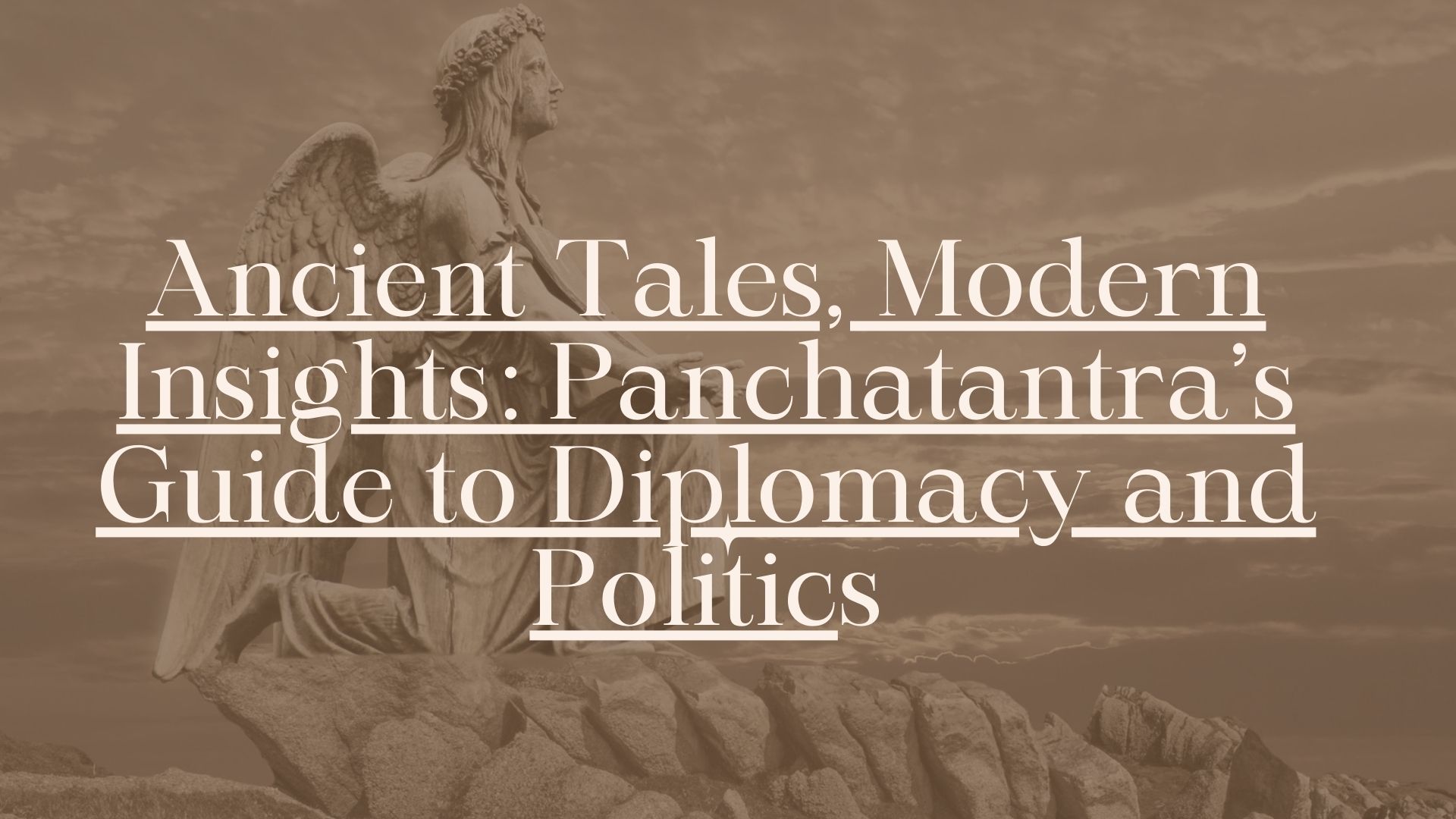- Author: Vipashu Gautam
When we think of Indian political ideas today, we often recall figures like Chanakya, Manu, and Vidur, along with their notable works. However, another significant name is Vishnu Sharma, whose Panchatantra stories offer invaluable insights into political and geopolitical understanding. These timeless tales delve into themes such as governance, alliance formation and dissolution, handling conflicts with more powerful adversaries, and a ruler’s conduct in challenging situations. This article explores the political teachings embedded in the Panchatantra stories, highlighting their relevance and wisdom.
The Panchatantra stories were originally crafted to educate the three princes of Raja Amarshakti in the art of governance. This intent explains the seamless integration of political and diplomatic lessons into their narratives. What makes these stories exceptional is their simplicity and engaging storytelling, which convey complex political, diplomatic, and geopolitical ideas in an accessible manner. Let us now delve into the knowledge hidden within these stories, examining their lessons one by one.
The first story of the Panchatantra demonstrates the importance of a wise and brave ruler through the character of Pingalak, the lion king. Despite his immense power, Pingalak becomes frightened upon hearing the roar of a bull and retreats to his palace, succumbing to fear without investigating the source. This scenario resonates with the modern world, where weak or undeserving leaders, despite having significant power, often fall prey to deceptions or external pressures, demoralizing their people. For instance, countries like North Korea attempt to intimidate the global community with exaggerated displays of military power, akin to the bull’s roar. The story also emphasizes the consequences of fear-driven leadership. Damanak, a diplomatic minister, manipulates the king’s fear for personal gain, eroding trust and destabilizing the kingdom. This serves as a reminder of how ministers or advisors can exploit weak leaders, leading to internal conflicts or rebellion.
Effective intelligence is crucial for maintaining a nation’s strength on the global stage. In the first tantra of the Panchatantra, Pingalak relies on his spy, Damanak, to gather information about the bull that frightens him. This highlights the importance of a robust intelligence network in overcoming fear and making informed decisions. However, the story also warns against over-reliance on a flawed intelligence network. Damanak provides false information, manipulating the king and jeopardizing the kingdom’s stability. In modern contexts, intelligence failures can have disastrous consequences, as seen in global incidents where agencies like the CIA, Mossad, or RAW fail to act on critical information.
One story illustrates how a pair of birds outwit a snake threatening their eggs by strategically placing the queen’s necklace in the snake’s hole, prompting the king’s soldiers to kill the snake. This clever act of diplomacy teaches the value of aligning with a more powerful ally to neutralize threats. This principle is reflected in contemporary geopolitics, where weaker nations like Ukraine maintain their resistance against stronger adversaries like Russia through alliances with powerful nations such as the USA and European countries. The story underscores how alliance formation can effectively balance power and achieve strategic goals.
The Panchatantra offers a vivid analogy for power dynamics in a story where smaller creatures like birds, flies, and ants collaborate to bring down a mighty elephant that destroyed their nests. This teaches how smaller entities, through unity, can challenge even the most powerful adversaries. In the modern world, regional alliances such as ASEAN, the European Union, and SAARC exemplify this principle. By coming together, these groups counterbalance dominant powers like the USA, establishing a multipolar world order and asserting their influence on the global stage.
The Panchatantra also provides strategic lessons on war in a dialogue between Meghvarn, the king of crows, and his secretary, Sthirjeevi. The discussion advises that when faced with a powerful enemy, a weaker entity should initially make a treaty to build trust while secretly preparing for conflict. The enemy’s weaknesses should be studied during the treaty period, allowing for a well-timed attack. A historical parallel can be drawn with World War II, where Hitler’s initial treaty with the USSR allowed him to gather strength before launching an attack.
In today’s world, where subjects like geopolitics and political science require years of study, the Panchatantra serves as a foundational text offering profound insights in a simple yet effective manner. It provides essential lessons on diplomacy, politics, and international relations, making it particularly beneficial for beginners. Its timeless appeal is evident in the fact that the stories have spread from India to over 200 versions and more than 50 translations worldwide, standing as a testament to their universal relevance.
Bibliography
- Olivelle, Patrick. The Pancatantra: The Book of India’s Folk Wisdom. Oxford University Press, 1997.
- Vidyalankar, Satyakam. Panchatantra Ki Kahaniyan: Niti aur Neeti ke Sandesh. Rajpal & Sons, 2015.


Leave a Reply